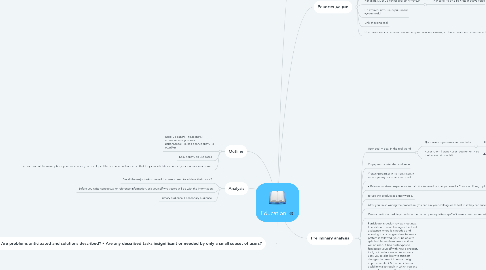Education
by Elen Kuklina


1. • Are all the subtasks described that users need to do to complete the major tasks? • Are necessary steps outside of the tool referenced? • Are all the reasons or conditions explained that are associated with optional tasks? • Are problems anticipated and solutions described? • Are any described tasks insignificant or needed by only a small subset of users?
2. Outline
2.1. Главные задачи, подзадачи, причины или условия использования, как реагировать на ошибки
2.2. Базировать ев use cases
2.3. Tell users all of the assumptions you made when you developed the scenario and model so that they can validate or correct your assumptions as well.
3. Analysis
3.1. Are all the major tasks covered that users need to achieve their goals?
3.2. Before you write conceptual or reference information, ask yourself what users will do with the information.
3.3. Primary audience + secondary audience
4. Виды документации https://i.imgur.com/ziTFr1v.png
4.1. Labels for user interface controls
4.2. Input hints in fields
4.3. Messages that appear on fields
4.4. Descriptive inline user interface text
4.5. Tooltips
4.6. Hover help, which are one to two sentences of description
4.7. Wizards for simplifying complex interactions
4.7.1. Tutorials
4.7.1.1. Guides
4.8. Embedded help panes
5. Preliminary analysis
5.1. User goal = goal in the real-world
5.1.1. Достигаем при помощи user tasks
5.1.1.1. User task = технические шаги
5.1.2. <user role>, I want <user requirement> so that <desired benefit>
5.2. Определять intended audience
5.3. Фокусироваться и на новичков, и на продвинутых пользователей
5.4. • Rely on hands-on experience to gain the knowledge that you need • Create outlines, topic models, information plans, and rough drafts to help you identify what you know and what you don’t know • Interview technical experts and domain experts
5.5. to use the product as a user would.
5.6. After you finish writing the procedure, you can ask your colleagues to test it; if they can successfully create a server profile by using the documentation that you wrote, you know that the procedure is accurate.
5.7. Does a particular task topic include the correct prerequisite steps? –Do users need more detail about a particular set of input fields? –Will users understand a new term based on the current definition?
5.8. Participate in design review meetings. In addition to contributing embedded assistance where it is needed and ensuring that a progressive disclosure pattern is followed, you’ll be able to gain insight into how new functions will be used. • Use prototypes to familiarize yourself with how a product, tool, or interface works. As an early user, you’re also likely to suggest changes that result in some design improvements. • Set up an informal usability walkthrough in which you and your colleagues use the information to perform some or all of the important user tasks just as users will. Rely primarily on the embedded assistance, and consult topics only when necessary.
5.9. You must start with what you do understand to create information plans, outlines or topic models, and rough first drafts of topic-based information.
5.10. Создавать information plan для релизов
5.11. To create a good topic model, start by identifying all of the goal-oriented user tasks and putting them in the most logical order. Then, determine the conceptual and reference information that is needed to support the tasks.
5.12. Rough drafts are your starting point for writing the topics that support your product. During this information gathering phase, when you’re identifying the pieces that you need to write, work at a very high level. Don’t invest time in documenting details just yet. At this stage, your goal is simply to figure out which pieces of the puzzle you understand well enough to document and which pieces require more research before you can document them.
5.13. В аутлайне делать пометки для reviewers
6. Рекомендации
6.1. Сделать функцию комментирования
6.2. Рассказывать не как работает, а как использовать
6.3. Излагать мысль с точки зрения читателя
6.3.1. Изложение от 2-го лица и active voice
